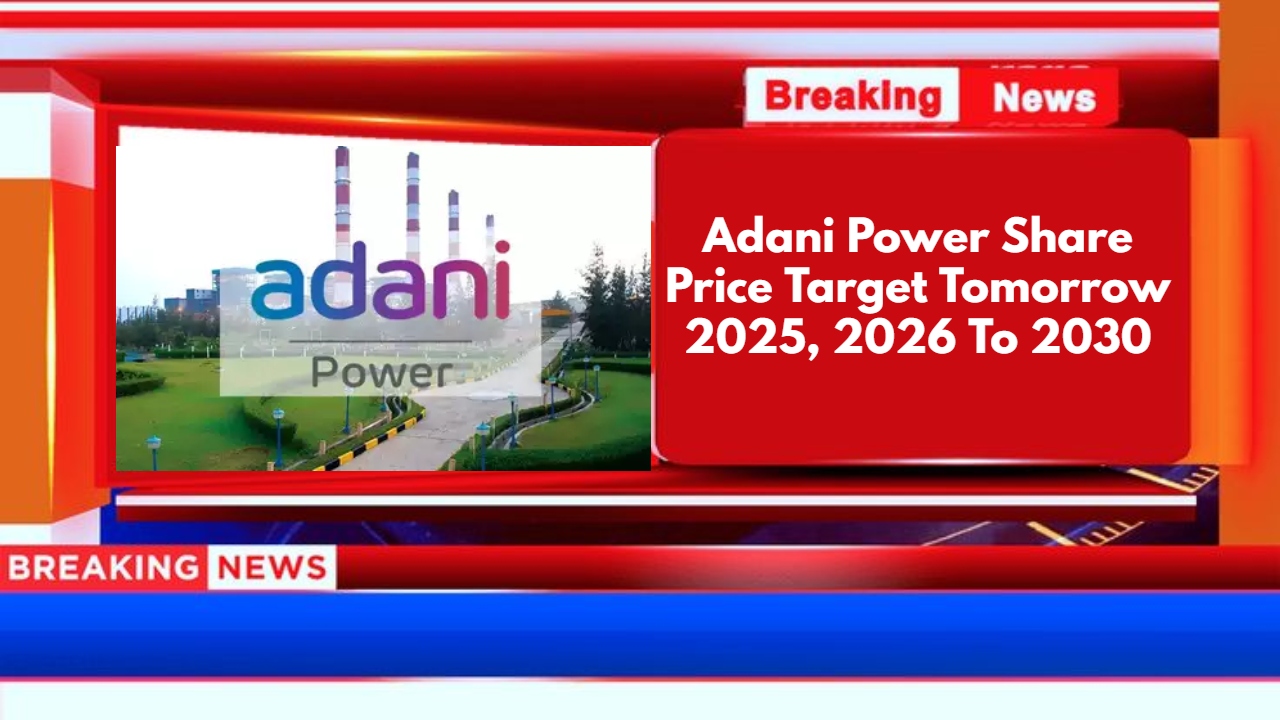Adani Power is one of India’s leading private power producers, playing a crucial role in meeting the country’s growing energy needs. With increasing demand for electricity, expansion in thermal and renewable energy, and government support for infrastructure growth, the company has strong potential for future growth. Adani Power Share Price on 1 March 2025 is 490.00 INR. This article will provide more details on Adani Power Share Price Target 2025, 2026 to 2030.
Adani Power Company Info
- CEO: Shersingh B Khyalia (11 Jan 2022–)
- Founded: 22 August 1996
- Founder: Gautam Adani
- Headquarters: Ahmedabad
- Number of employees: 3,295 (2024)
- Parent organization: Adani Group
- Subsidiaries: Mundra Petrochem Limited
Adani Power Share Price Chart
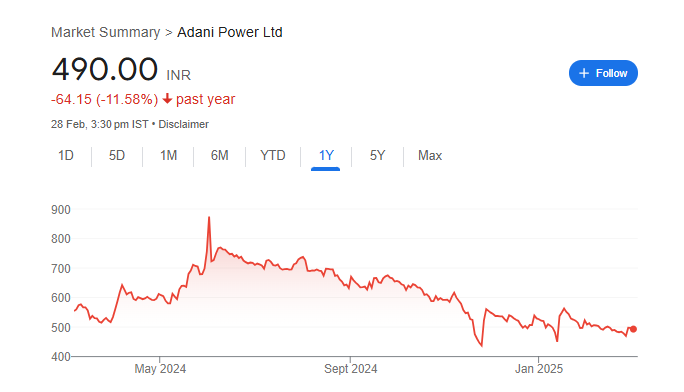
Adani Power Share Price Details
- Today Open: 495.00
- Today High: 501.55
- Today Low: 473.00
- Mkt cap: 1.85LCr
- P/E ratio: 14.52
- Div yield: N/A
- 52-wk high: 895.85
- 52-wk low: 432.00
Adani Power Shareholding Pattern
- Promoters: 74.96%
- Foreign Institutions: 12.35%
- Mutual Funds: 1.60%
- Retails and others: 11.09%
- Domestic Institutions: 0%
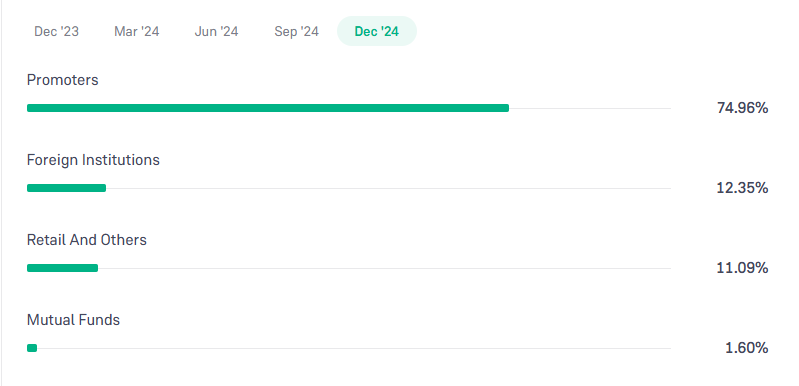
Adani Power Share Price Target Tomorrow 2025, 2026 To 2030
- 2025 – ₹900
- 2026 – ₹950
- 2027 – ₹1000
- 2028 – ₹1050
- 2029 – ₹1100
- 2030 – ₹1150
Adani Power Share Price Target 2025
Adani Power share price target 2025 Expected target could be ₹900. Adani Power, one of India’s largest private power producers, has strong growth potential due to increasing electricity demand and expansion plans. Here are six key factors that could influence its share price target in 2025:
1. Rising Power Demand in India
With rapid urbanization, industrial growth, and increasing household electricity consumption, the demand for power is rising. This creates significant opportunities for Adani Power to expand its market share.
2. Government Policies and Energy Reforms
Favorable government policies, such as power sector reforms, renewable energy targets, and infrastructure development, can boost Adani Power’s growth and profitability.
3. Expansion of Thermal and Renewable Energy Projects
Adani Power is expanding its capacity with new thermal and renewable energy projects. Increasing installed capacity will drive revenue growth and enhance investor confidence.
4. Strong Financial and Operational Performance
Higher efficiency, cost management, and improved operational performance can strengthen Adani Power’s financial stability, positively impacting its share price.
5. Long-Term Power Purchase Agreements (PPAs)
Adani Power secures long-term contracts with state electricity boards and industries. Stable agreements ensure consistent revenue, reducing risks related to market price fluctuations.
6. Global Expansion and Strategic Partnerships
Adani Power is expanding internationally and forming partnerships in renewable energy. Global projects and collaborations can diversify revenue streams and increase business stability.
Adani Power Share Price Target 2030
Adani Power share price target 2030 Expected target could be ₹1150. While Adani Power has strong growth potential, several risks and challenges could impact its share price by 2030. Here are six key factors to consider:
1. Regulatory and Policy Risks
Government policies on coal-based power plants, carbon emissions, and renewable energy transitions could impact Adani Power’s operations. Any unfavorable regulations may increase costs or limit expansion.
2. Dependence on Coal and Fuel Price Volatility
Adani Power relies heavily on coal for electricity generation. Fluctuations in coal prices, supply chain disruptions, or import restrictions could affect production costs and profitability.
3. Increasing Competition from Renewable Energy
With India shifting towards renewable energy sources like solar and wind, traditional thermal power generation could face declining demand, impacting Adani Power’s long-term business model.
4. Environmental and ESG Concerns
Growing environmental concerns and stricter ESG (Environmental, Social, and Governance) regulations may put pressure on coal-based energy companies, affecting Adani Power’s reputation and investor sentiment.
5. Financial and Debt-Related Challenges
Expanding power infrastructure requires high capital investment. If Adani Power takes on excessive debt or faces repayment challenges, it could impact its financial stability and share price performance.
6. Geopolitical and Economic Uncertainty
Global economic slowdowns, trade restrictions, or geopolitical tensions affecting fuel imports and power projects could create uncertainties for Adani Power’s long-term growth.
Financials Statement Of Adani Power
| (INR) | 2024 | Y/Y change |
| Revenue | 503.51B | 29.86% |
| Operating expense | 61.26B | 21.57% |
| Net income | 208.29B | 94.18% |
| Net profit margin | 41.37 | 49.57% |
| Earnings per share | — | — |
| EBITDA | 182.16B | 78.54% |
| Effective tax rate | -0.18% | — |
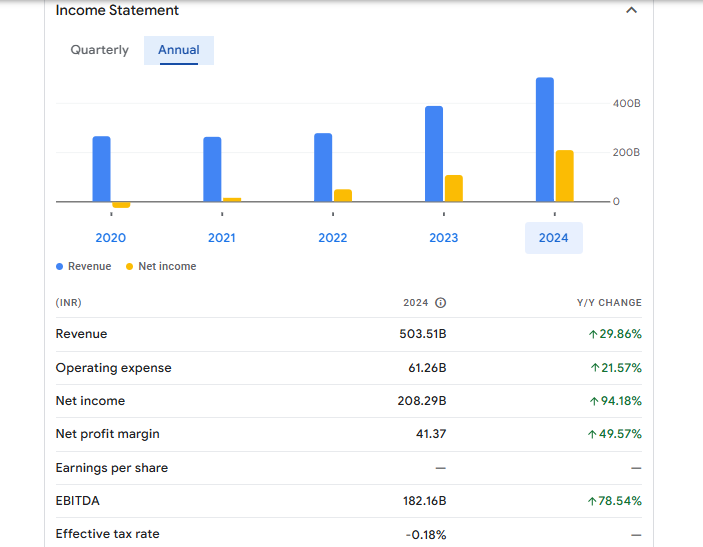
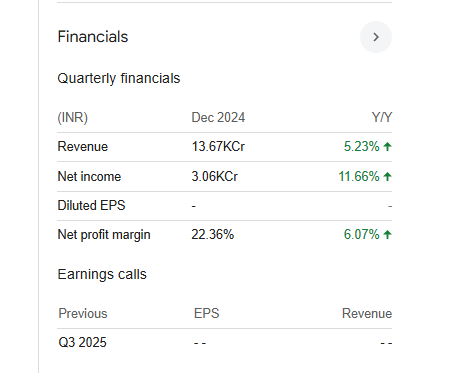
Read Also:- Suzlon Share Price Target Tomorrow 2025, 2026 To 2030

